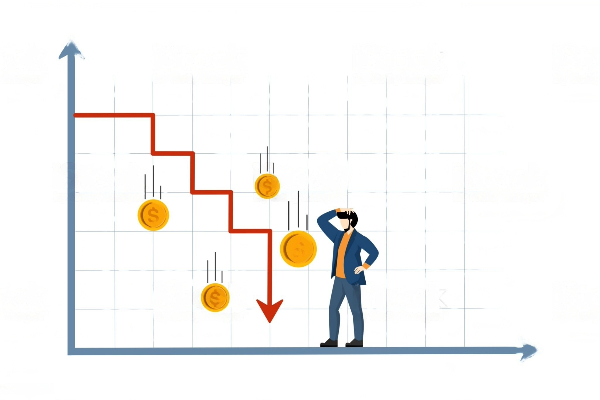Inflation continues to shape the global financial landscape, making its impact on consumer behavior one of the most discussed topics in economics. As we move through 2025, understanding how inflation trends affect spending and saving habits is critical for individuals, businesses, and policymakers. This article delves into the intricacies of inflation’s impact, examining current trends, their effects on consumer behavior, and strategies to adapt.
The Inflation Landscape: A 2025 Overview
Inflation rates across the globe have been in flux, influenced by factors such as monetary policy, supply chain challenges, and geopolitical tensions. In developed economies, tighter monetary policies implemented by central banks have helped moderate inflation to some extent. However, in emerging markets, currency volatility and ongoing supply disruptions continue to drive price increases.
The impact of inflation varies by region, but its effects on household budgets are universal. Consumers face rising costs for essentials such as food, energy, and housing, leaving less room for discretionary spending. While inflation rates in 2025 are not as alarming as in previous years, they remain a significant factor in financial decision-making.
How Inflation Affects Consumer Spending
Consumer spending patterns are highly sensitive to inflationary pressures. As prices rise, households often shift their priorities, focusing on necessities while cutting back on non-essentials. Here are some key trends observed in 2025:
1. Prioritizing Essentials
Inflation pushes consumers to allocate more of their income toward essentials such as groceries, utilities, healthcare, and housing. This leaves less disposable income for luxuries and non-essential goods. Industries such as travel, entertainment, and luxury retail may face subdued demand as a result.
2. Increased Price Sensitivity
Consumers are becoming more discerning about where and how they spend their money. Many are turning to discounts, coupons, and promotions to stretch their budgets. Generic and store-brand products are gaining popularity as they offer better value compared to premium brands.
3. Delaying Major Purchases
High-interest rates, a common tool used to combat inflation, make borrowing for big-ticket items such as homes, cars, and appliances more expensive. Consequently, many consumers are postponing these purchases, leading to slower growth in industries reliant on such spending.
4. Embracing Digital Tools
Digital tools and apps that help consumers track spending, compare prices, and find deals are becoming indispensable. These technologies empower households to make informed decisions and manage their finances more effectively in an inflationary environment.
The Impact on Savings and Investment
Inflation doesn’t just affect spending—it also has profound implications for saving and investment habits. As the cost of living rises, consumers must rethink how they preserve and grow their wealth.
1. Focus on Emergency Funds
Economic uncertainty drives a heightened focus on precautionary savings. Households are prioritizing the creation and maintenance of emergency funds to ensure financial stability in the face of unexpected expenses. This trend underscores the importance of liquidity in personal finance planning.
2. Combatting the Erosion of Wealth
Inflation erodes the real value of money over time, making traditional savings accounts less attractive. To counter this, consumers are exploring inflation-protected investment options such as Treasury Inflation-Protected Securities (TIPS), real estate, and commodities like gold. These assets help preserve purchasing power and provide a hedge against inflation.
3. Increased Interest in Financial Literacy
The need to navigate complex financial decisions during inflationary periods has spurred greater interest in financial education. Consumers are learning about budgeting, investing, and retirement planning to better manage their finances. Online courses, workshops, and financial advisory services are seeing increased demand as a result.
4. Balancing Risk and Reward
While some individuals seek low-risk investments to safeguard their money, others are exploring higher-risk options like stocks and mutual funds in search of better returns. Diversification remains a key strategy for mitigating risks while pursuing growth.
Implications for Businesses
Inflation’s impact on consumer behavior has significant implications for businesses. Companies must adapt their strategies to meet changing demands and maintain profitability in a challenging economic environment.
1. Offering Value-Oriented Products
Businesses that provide affordable yet high-quality products are well-positioned to attract value-conscious consumers. This may involve streamlining operations to reduce costs or launching budget-friendly product lines.
2. Enhancing Customer Loyalty
In times of economic uncertainty, building strong customer relationships is crucial. Loyalty programs, personalized marketing, and exceptional customer service can help businesses retain their customer base.
3. Leveraging technology.
Data analytics and artificial intelligence (AI) are becoming essential tools for understanding consumer behavior. These technologies enable businesses to anticipate trends, optimize pricing strategies, and improve supply chain efficiency.
4. Innovating to Stay Competitive
Innovation is key to thriving in an inflationary environment. Companies that invest in research and development to create new products, improve processes, or enhance sustainability are better equipped to differentiate themselves in the market.
Policy Responses and Economic Outlook
Policymakers play a critical role in mitigating the effects of inflation on households and businesses. Central banks, governments, and international organizations are implementing measures to promote stability and growth.
1. Central Bank Policies
Central banks are balancing interest rate adjustments with the need to support economic growth. While higher interest rates help control inflation, they also increase borrowing costs, which can slow down economic activity. Striking the right balance is a key challenge in 2025.
2. Fiscal Policies
Governments are using targeted subsidies, tax relief, and social safety nets to support vulnerable populations. Inflation-indexed benefits, such as cost-of-living adjustments for pensions and wages, are helping households cope with rising expenses.
3. Global Coordination
International cooperation is essential to address the root causes of inflation, such as supply chain disruptions and energy price volatility. Collaborative efforts can help stabilize markets and promote sustainable economic growth.
Inflation is an ever-present force that shapes financial decisions at every level. In 2025, its influence on spending, saving, and investment is undeniable, prompting consumers, businesses, and policymakers to adapt to a rapidly changing economic landscape. By understanding the trends and implementing effective strategies, all stakeholders can navigate the challenges of inflation and emerge more resilient in the years ahead.

